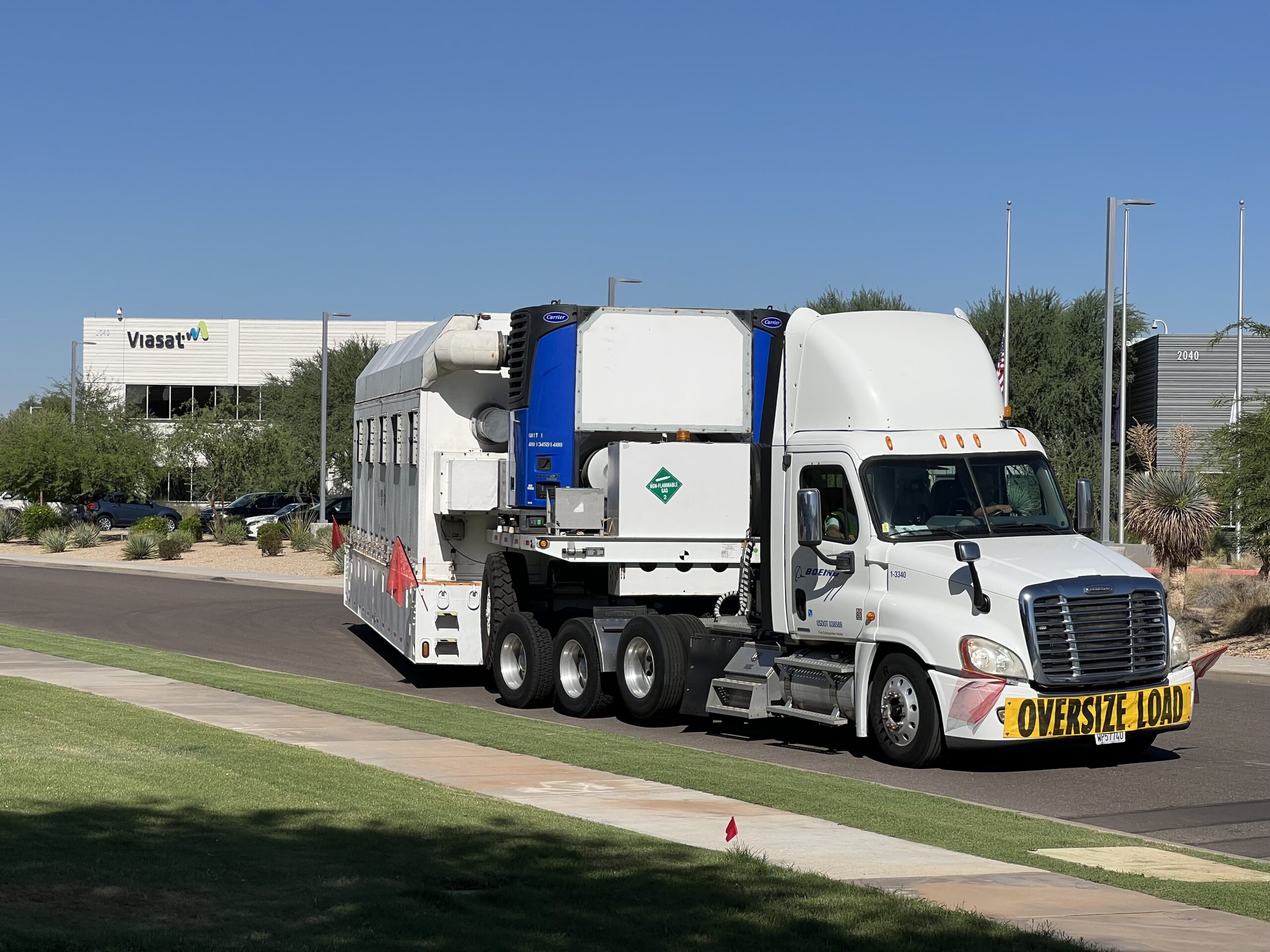TAMPA, Fla. — The payload for Viasat’s second ViaSat-3 broadband satellite has arrived in California to be integrated with a Boeing chassis, the operator said July 13.
The high-throughput payload traveled by truck from Viasat’s facility in Tempe, Arizona, to Boeing in El Segundo, where it will also undergo environmental tests in preparation for launch.
The first Ka-band ViaSat-3 satellite was integrated with Boeing’s 702 satellite bus platform last year. This satellite is slated to launch to geostationary orbit (GEO) later in 2022 on a SpaceX Falcon Heavy rocket to cover the Americas.
The second ViaSat-3 is due to launch about six months after the first to cover Europe, the Middle East and Africa.
The third and final ViaSat-3 is on track to launch about six months after that to expand the company’s coverage over Asia-Pacific.
Viasat is developing all three payload modules in-house. According to the company, they will each be capable of receiving, transmitting and processing data at rates greater than one terabit a second — three times faster than the Americas-focused ViaSat-2 that launched in 2017.
Viasat had initially planned to deploy the first ViaSat-3 satellite in 2019 before supply chain issues and pandemic-related delays pushed it into 2022.
Jupiter-3, EchoStar’s Americas-focused high-throughput GEO satellite that Maxar Technologies is building, has also been caught up in delays and is now set to launch on a Falcon Heavy in 2023 instead of this year.
Meanwhile, SpaceX has been busy launching non-geostationary satellites to expand the coverage and availability of its Starlink constellation.
Starlink reached a key milestone for serving mobility markets June 30 when the Federal Communications Commission granted permission to connect land vehicles, boats and aircraft.
Viasat sees strong growth potential in the inflight connectivity market, in particular, and has been building up its partnerships with airlines.
Most recently, Virgin Atlantic said July 12 that Viasat terminals will be installed on 16 new Airbus A330-900 aircraft, scheduled to enter service in the second half of 2022 with intercontinental flights between the Americas and the United Kingdom.
The equipment Viasat is installing is designed to be forward-compatible with its ViaSat-3 constellation.
